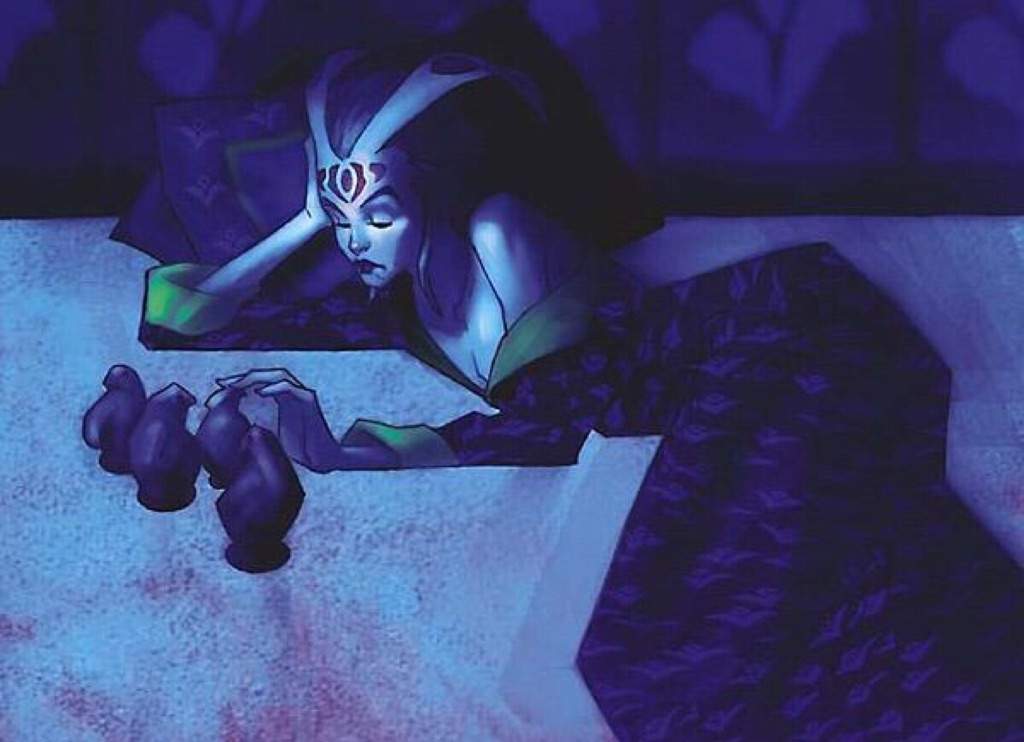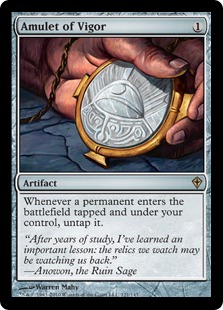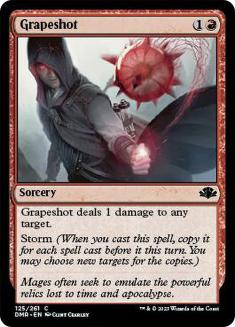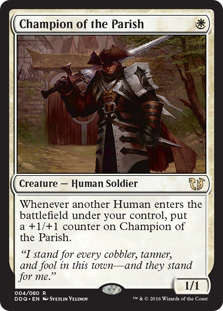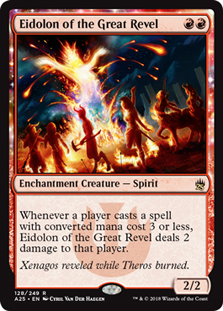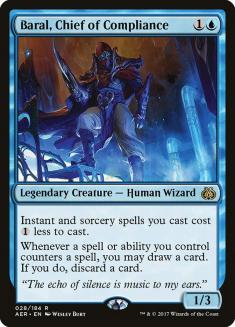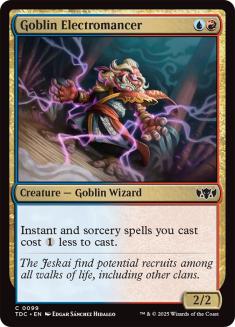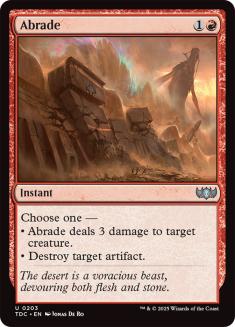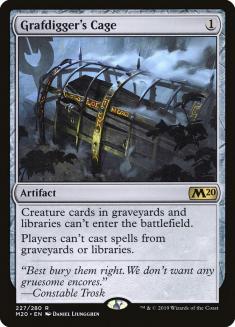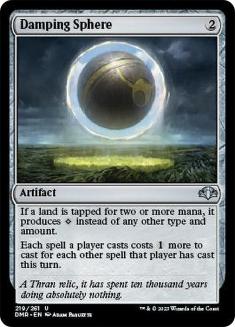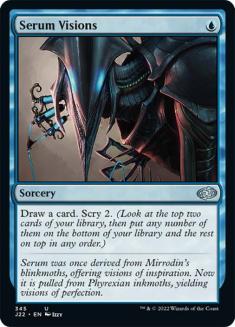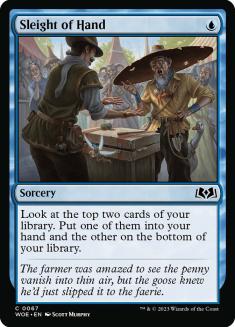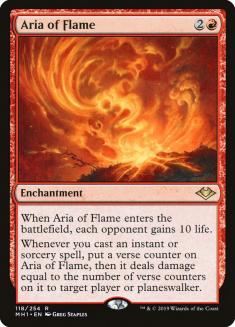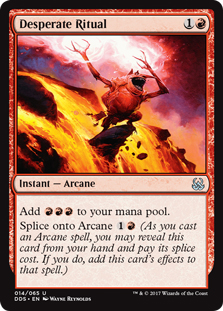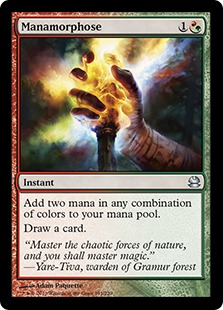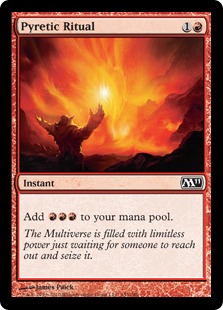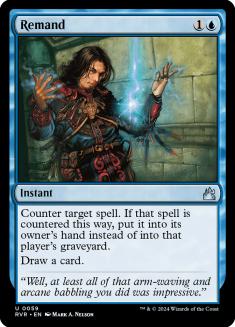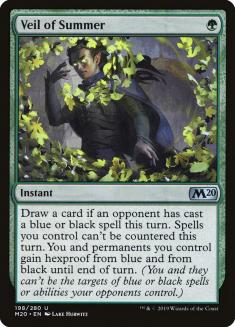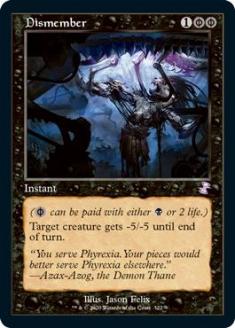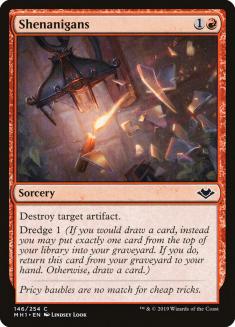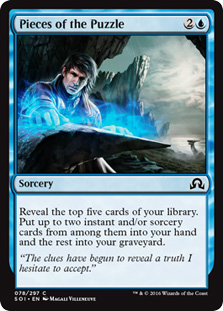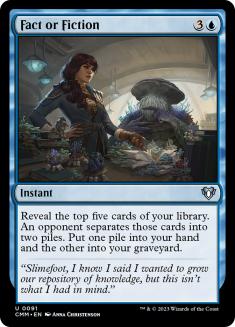Oko? Gone.
People’s opinion of Primeval Titan? High.
Storm? Brewing.

Modern sure has had its fair share of shakeups over the last few months. Between Modern Horizons, Throne of Eldraine, the good cards from those sets getting banned, and natural progression, Modern doesn’t look remotely close to what it did this time last year.
Well, except for one thing.
People are still insisting on casting Primeval Titan until the opponent dies. With Field of the Dead being the newest angle of attack for these decks, it’s honestly just devolved to building Grave Titans.
As decks move further into a space that involves winning fair mirrors, true combo decks are going to shine. We even saw this in practice just a couple of weeks ago in Columbus:
Creatures (8)
Lands (17)
Spells (35)
- 4 Sleight of Hand
- 4 Serum Visions
- 4 Gifts Ungiven
- 4 Desperate Ritual
- 4 Opt
- 2 Remand
- 1 Repeal
- 1 Empty the Warrens
- 1 Grapeshot
- 4 Manamorphose
- 4 Pyretic Ritual
- 2 Past in Flames
Sideboard

Freshly off a hiatus, Gifts Storm players Caleb Scherer and Daniel D’Amato (with the help of Becky Adlman on Simic Titan) crushed their way to the elimination rounds of SCG Columbus. It’s a surprisingly impressive feat when considering just how dominant Urza had become in the format before the bannings of Mox Opal and Oko, Thief of Crowns.
So what makes Gifts Storm a better choice in Modern now than it was before? A lot of it has to do with the fact that Primeval Titan is great at clowning the decks that combat Gifts Storm.
Humans? Not going to thrive in the “endless copies of Grave Titan and Engineered Explosives” format.
If people are looking to make Eidolon of the Great Revel happen, looping Radiant Fountains is a depressingly easy way to keep games out of reach.
All of this may sound like a long-form infomercial committed to selling people on Primeval Titan, but that isn’t the case. The point is here is to illustrate how perception of a format can impact its texture. With such a large chunk of the internet excited by the idea of Primeval Titan in Modern, and the buzz around Dryad of the Ilysian Grove, it’s fairly academic to arrive at the conclusion that people will be preparing for a land-rich meta.
The Basics
After two-and-a-half years, Gifts Storm is still one of the premier Turn 3 decks of the format. Between the cantrips in the deck providing consistency, its “Bears” providing explosiveness, and alternate combos out of the sideboard, it’s hard to deny the strength of the archetype.
The goal of Gifts Storm frequently involves having one of its cost-reducing creatures (or “Bears” for short), and then chaining a series of Rituals before casting Gifts Ungiven for more Rituals and a Past in Flames, and repeating this process enough times for a Grapeshot to kill the opponent.
For an extended version of how to pilot Gifts Storm, feel free to check out my old primer on the deck. Some of the specifics are dated, but the information on deterministic kills in the deck and the specific card interactions hold up today.
The List
Creatures (8)
Lands (17)
Spells (35)
- 4 Sleight of Hand
- 4 Serum Visions
- 4 Gifts Ungiven
- 4 Desperate Ritual
- 4 Opt
- 2 Remand
- 1 Repeal
- 2 Grapeshot
- 4 Manamorphose
- 4 Pyretic Ritual
- 2 Past in Flames
Sideboard

The specifics of this list had some guidance from members of the aforementioned Gifts Storm squad, and the changes themselves may be eyebrow-raising given the recent bannings, but they make sense given the upcoming shifts to the format.
The most notable shift in the deck is the reintroduction of Abrade. At first, this seems like a step in the wrong direction; what with Mox Opal getting banned, it’s strange to look to artifact destruction. That thought process is a result of a misunderstanding of the reason that combo decks put answers into their decks.
Abrade isn’t in the sideboard in order to answer the artifact-specific strategies. It’s in the sideboard to answer specific artifacts.
After a breakout weekend for a Chord of Calling, Eldritch Evolution, and pile-of-undying-creatures deck, Grafdigger’s Cage is going to see an uptick in popularity. With Amulet Titan’s popularity on the rise, Damping Sphere is going to find its way into more sideboards.
Neither card is very beatable for Gifts Storm, and ensuring that the deck has more ways to combat them is the first critical update for the upcoming Modern format.
The distribution of win conditions is the most marked shift from the lists that Scherer and D’Amato have been playing. The emphasis being placed on Grapeshot in the maindeck is a concession to the fact that the deck isn’t interested in winning games with Empty the Warrens. That’s to say that it wants the game to literally end on the third turn more consistently. As strong as Empty the Warrens can be against fair decks, it’s not going to line up well against Primeval Titans or the unfair decks that line up well against big mana strategies.
Another mark in favor of Grapeshot is its efficacy against creature combo. With big mana decks on the rise, and with Yawgmoth’s success last weekend, a surge in Glistener Elf, Devoted Druid, and Noble Hierarch is to be expected. Any of the deck’s slower hands will be happy with a mini-storm turn that involves casting a Ritual, a Manamorphose, a cantrip, and then Grapeshot as a makeshift Pyrokinesis.
The theory behind these kind of plays is that reducing the resources of Gifts Storm and an opposing green combo deck will favor the Storm pilot. This is rooted in the idea that the cantrips that this deck has access to will make it better at rebuilding, on average, than a deck with clunkier card selection. The fact that a single Past in Flames (or Gifts Ungiven, by extension) can put the game away by itself certainly doesn’t hurt either.
To anyone who hasn’t paid much attention to the archetype since Modern Horizons, Aria of Flame may seem like a new addition to the deck. With most of its Modern tenure being alongside Arclight Phoenix, the card is forgettable, but Gifts Storm absolutely breaks it in half.
Providing the deck with a kill condition that doesn’t need something like Past in Flames and doesn’t demand all of the spells be chained back-to-back gives the deck a way to play through two of the most conventional ways that people try to combat it.
Normally, providing an alternate angle of attack is something that combo decks are perfectly happy sacrificing power in the name of, but there are a number of hands where Aria of Flame is a more powerful kill condition than Grapeshot.
This hand is lethal with enough lands (or a mana-reduction Bear on the battlefield). Simply place the lifegain trigger from Aria of Flame on the stack, and then cast a pile of spells that kills the opponent before the initial trigger resolves. Don’t forget that Remand does a bit to pad the storm count by targeting its owner’s spells!
Veil of Summer. The most powerful hate card printed since Pyroblast. It’s easy to see why the Storm Squad leaned so hard into the card. With Urza sporting so many copies of Metallic Rebuke, Cryptic Command, and even Thoughtseize and Fatal Push, having a single-card answer to a wall of interaction is incredibly attractive.
That being said, with a projected increase in Titan decks, interaction won’t be as popular without something like Oko to keep the Titans themselves in check. This creates a balance that makes it easier to trim a copy of Veil as a result of its decreased relevance, but its raw power keeps the rest in the 75.
With Yawgmoth’s success last weekend and creature combo’s positioning against big mana decks, having a healthy amount of creature removal is a must. This is also why we’re seeing Abrade in the sideboard instead of something more potent against artifacts in the vein of Ancient Grudge, Shattering Spree, or even Shatterstorm.
Sideboarding Philosophy
Sideboarding with linear combo is daunting at first. How much actually needs to get sideboarded in? Is there an exact amount that the deck’s primary gameplan can be diluted without ruining the deck itself? At what point is the deck supposed to head in a completely different direction?
When figuring out how to posture in a matchup, understanding your role, either as the defender or the aggressor, is paramount. Against a deck that’s consistently faster than you, or a deck that is the same speed and on the play, you need to consider that simply comboing isn’t going to be good enough. Against a deck that goes bigger or has lock pieces it can utilize in a long game (e.g. Primeval Titan being able to grab Bojuka Bog and Pact of Negation via Tolaria West), comboing is more important than anything else, and slots in the library need to be committed accordingly.
It’s from this thought process that we arrive at the two kinds of cards in the Gifts Storm sideboard: interaction and reinforcement.
Interaction
Interactive cards are tools that are going to proactively attack what the opponent is trying to accomplish in their gameplan. These cards are meant to break up the opponent’s combos, slow down their aggression, and so on. When these cards are being added to the deck, the cards being cut are generally things that the opponent would try to interact with.
The reasoning here is that the decks that are faster than Gifts Storm aren’t exactly committing a ton of energy to interacting. Shaving a copy or two of Goblin Electromancer, for example, is an easy sacrifice to make against Devoted Devastation, when they don’t play much in the way of creature removal.
Most linear combo decks aren’t going to commit too many slots to this flavor of card. This is because they still need to maintain a density of combo pieces in order to be a functional deck, and if the metagame is occupied by that many decks that the linear combo deck in question lines up poorly against, it’s frequently better to look to other archetypes.
Reinforcement
The other kind of card is a bit fuzzier to define, because it takes on many shapes. Cards that fall under the “Reinforcement” umbrella are cards that are there to ensure that the deck gets to implement its gameplan.
Sometimes that means making it so the opponent can’t reliably interact.
Other times, it means dealing with the opponent’s form of interaction.
It can also take the form of reshaping the specifics of the deck’s own gameplan in order to make the opponent’s interaction less effective. With Abrade and Shenanigans, it’s more obvious when a card is pointedly being dealt with. With things like Fact or Fiction or Aria of Flame, it isn’t as clear, but the purpose of these cards is to have game against the ways that the opponent will interact.
Historically, Gifts Storm has had a card in the sideboard to swap out for some number of Gifts Ungiven. Why? Because of graveyard hate’s potency against traditional Gifts piles. A large chunk of the strength of Gifts Ungiven in maindeck games is the fact that Past in Flames removes the opponent’s agency. This isn’t the case when Grafdigger’s Cage or Rest in Peace gets involved.
The purpose of utilizing other blue card advantage engines is to help the Gifts Storm pilot assemble the critical mass of resources in order to combo.
Using these passive forms of reinforcement becomes more important against decks that are heavy on interaction. This way, the deck isn’t priced into diluting itself with a pile of Veil of Summers and Abrades. Instead, it has the benefit of keeping the deck functional while shifting the opponent’s cards from “devastating” to “annoying.”
The cards that get cut in the name of reinforcement are going to vary based on the texture of the matchup, but there are some questions that can help inform the easiest things to cut:
Is my opponent playing cards that impact my combo?
The most obvious question is also the one that requires the most format knowledge. Generally speaking, players aren’t going to be completely cold to the things that Gifts Storm is doing. Between a creature, a large requisite of pieces needed to combo, and the graveyard, there are several interaction points. The better question to be asking is:
How will my opponent interact with what I’m doing?
This is the kind of question that informs which flavor of reinforcement will be best. Against a deck like Dredge, for example, you shouldn’t be too worried about graveyard hate. After all, they use the graveyard, and most things that blank your graveyard are much worse for them. This should tell you that they’ll likely try to interact with your creatures or with the fact that you have to cast a ton of spells. Therefore, cutting creatures isn’t something you want to do against them. You don’t want to cut Gifts Ungiven because its Past in Flames will always be good. And then?
How much help do I need?
Dredge is a matchup that, outside of its absolutely perfect draws, will be slower than Gifts Storm. It also isn’t the most interactive. Instead of loading up ways to combat with what they’re doing, Plan A will be reliable a good chunk of the time. This means that having answers to stray artifacts like Damping Sphere is the only base that really needs to be covered. If the main plan is good enough and you don’t want to touch the combo itself, look to trimming cantrips. You can also look to shaving redundant tutor targets (looking at the second copy of Grapeshot here).
Do I have access to a more reliable kill?
This will come down to threat assessment from your own side of the table. This means asking yourself, “Will Empty the Warrens win games by itself?” and “Will I generate a large enough storm count to kill the opponent with Grapeshot?”
Empty the Warrens won’t be good enough against fast decks or against decks that can easily answer a bunch of a 1/1 creatures. Grapeshot won’t reliably end games against decks that are reducing the deck’s ability to go forever. That means that decks with a ton of graveyard hate are bad news for Grapeshot because Past in Flames isn’t doubling or tripling the deck’s storm count.
Context will shift from match to match, but the answers to all of these questions should inform your decisions. Practicing sideboarding and asking yourself each of these questions, one at a time, is how you get used to figuring out how exactly your deck needs to be built from matchup to matchup.
I strongly recommend reinforcing these habits as quickly as possible. Drake Sasser already demonstrated just how powerful Gifts Storm can be in a big mana format at the end of last year. The deck isn’t difficult to acquire. At this point it’s simply a matter of choosing whether or not you want to play the best deck for the upcoming metagame.

